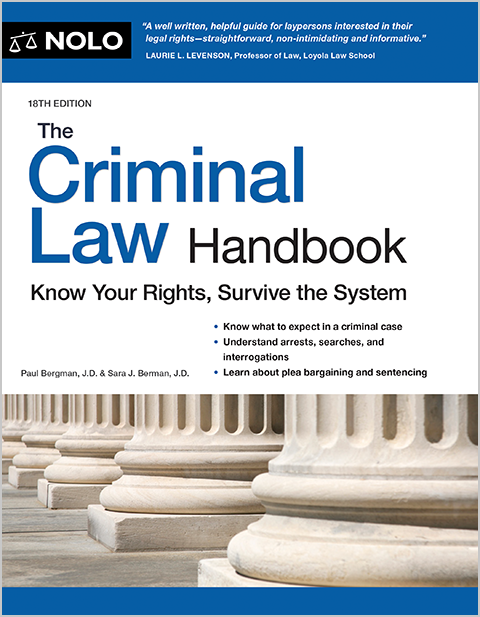Learn how much SSDI or SSI back pay you can get. The amount of back payments you're entitled to depends on your application date and your disability date.
When you're awarded Social Security Disability Insurance (SSDI) or SSI disability benefits, Social Security will owe you more than your monthly disability checks. You'll also receive a check for SSDI or SSI back pay. How much back pay you're owed depends on several different factors, including the type of disability benefits you'll receive, when you became disabled, and how long you waited for a decision.
Types of Back Payments
Back payments are paid for the months between the date you applied for disability benefits and the date you were approved for benefits. Due to the number of people who apply for disability benefits and the time it takes to process applications, there's usually a long delay between your application date and approval date.
People who get SSDI back pay will also get payments for the months between when they became disabled (their "disability onset date") and when they applied for Social Security disability benefits. These back benefits are called "retroactive benefits" because you can get them even before your application filing date—you would have received these monthly benefits if you had applied for SSDI earlier.
But note that, for disability insurance (SSDI) benefits, Social Security has a five-month waiting period that starts on your disability onset date. So you're only eligible to receive back pay for the months that begin after this waiting period ends (see "When Payments Will Begin," below, for further information).
SSDI v. SSI Back Pay
The type of back payments you're eligible for depends on the type of benefits you're receiving. People with disabilities can receive SSDI (benefits for those with enough work history) or SSI (benefits for those who have low income and assets). It's possible for individuals to receive both benefits, so you can receive both SSI and SSDI back pay.
Below is a chart telling you what back payments you'll receive if you get approved for both SSI and SSDI.
|
SSDI |
SSI |
|
|
Back payments available? |
Yes |
Yes |
|
Retroactive benefits available (prior to application date)? |
Yes |
No |
|
Interest paid on back pay? |
No |
No |
Note that there is no back pay maximum, either for SSDI or SSI.
When Disability Payments Begin
For those who are receiving SSI benefits, payments begin the first full month after you're approved for benefits. For example, if you're approved for SSI benefits on January 1, you can expect to begin receiving benefits on February 1. There's an exception to this rule for individuals who were determined to be "presumptively disabled." Those individuals can begin to receive benefits while their application is being processed.
For those who are receiving SSDI benefits, several factors affect when your payments begin: your disability onset date, your application date, and the five-month waiting mandatory period for SSDI. (There's one exception to the waiting period for SSDI; claimants who've been diagnosed with amyotrophic lateral sclerosis, or ALS, don't need to wait five months.)
When Is Your Disability Onset Date?
Your onset date is the date when you became disabled, such as the date you stopped working, the date you had surgery for your impairment, or the date of an accident that caused your disability.
Social Security will use the date you filed a disability application as your "alleged onset date." If Social Security doesn't challenge this date, the date of application will become your "established onset date" (EOD). Your EOD is important because it is on that date that benefits can begin.
Sometimes, however, Social Security changes your alleged onset date to a more recent date, so that you'll get less back pay. But the onset date should reflect when you actually became disabled and unable to work. If you were disabled for a period of time before applying, and Social Security changes your onset date, you may want to appeal to challenge the established onset date.
How Does the Wait Period Work?
A mandatory waiting period applies to all SSDI claims. You must be disabled for five months after your disability onset date before you can start receiving SSDI cash payments. You'll receive disability benefits starting at the beginning of the sixth month.
The five-month wait period is generally shorter than the time it takes for an application to be approved, so the waiting period doesn't usually delay the start of your monthly payments, but it does affect the amount of your SSDI back pay. Since Social Security doesn't pay disability benefits during the waiting period, you won't get paid back payments for the five months of the waiting period.
How Does Your Application Date Affect Your Back Pay?
You won't be able to collect retroactive benefits for more than 12 months—the 12 months before your application date. If you add the 5 months of the waiting period to the 12 months of retroactive benefits, the farthest back that Social Security will recognize a disability onset date is 17 months before the application date (12 + 5 = 17). This is true even if you actually became disabled years ago.
Another way to think about it: if you weren't disabled more than five months before your application date, you aren't going to get any retroactive benefits.
Examples of Back Payment Calculations
Your "date of entitlement" is the date that Social Security starts owing you benefits. For SSDI, it's five months after your disability onset date. By using your date of entitlement, you should be able to calculate the amount of your SSDI back pay. Here are some examples using our SSDI back pay calculator.
|
SSDI Benefits |
|
|
Date of Disability Onset- EOD |
January 1, 2024 |
|
Date of Application |
March 1, 2024 |
|
Date of Benefits Approval |
January 1, 2025 |
|
Date of Entitlement |
July 1, 2024 |
|
Months between EOD and Approval Date MINUS Wait Period |
12 – 5 = 7 |
|
Monthly Payment |
$1,000 |
|
SSDI Back Pay Due (Monthly Payment x Months between EOD and Approval Date MINUS Wait Period) |
$7,000 |
|
SSI Benefits |
|
|
Date of Disability- EOD |
January 1, 2024 |
|
Date of Application |
March 1, 2024 |
|
Date of Benefits Approval |
January 1, 2025 |
|
Date of Entitlement |
April 1, 2024 |
|
Months between Application Date and Approval Date |
10 |
|
Monthly Payment |
$500 |
|
SSI Back Pay Due (Monthly Payment x Months between the Application Date and Approval Date) |
$5,000 |
How Are Back Payments Made
If Social Security approves you for SSDI only, you'll most likely receive one lump-sum payment for the entire amount of your SSDI back pay.
If you're approved for SSI, or you get approved for both SSI and SSDI, the rules are different. Social Security generally pays the past-due benefits for SSI or combined SSI/SSDI in three equal installment payments, separated by six months each.
However, you are eligible for larger first and second installments if you need money for "necessities" (housing, food, medical needs) or to pay off debts for necessities. Or, you may be eligible for one lump-sum payment if you are not expected to live past the next 12 months or you are no longer eligible for SSI benefits at the time you receive your back pay (and not expected to become eligible for benefits within the next 12 months).
As of August 29, 2024, you no longer need to provide documentation of your debts or expenses in order to qualify for increased installment payments. You can simply allege that you require the payments for necessities or debts due to necessities. For more information, read our article on lump-sum payments of back pay.
When You'll Receive Your Back Pay
You should receive your SSDI or SSI back pay in a separate check or direct deposit one or two months following your approval. You may receive it before or after you receive your first monthly payment.
To learn more about disability back pay and how it's taxed, see our article the taxation of Social Security disability backpay.

